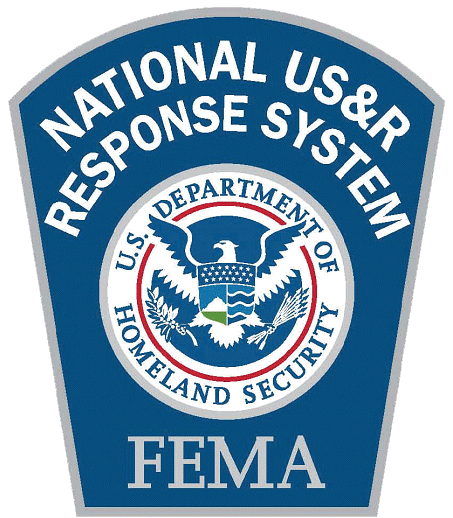Urban search and rescue (US&R) involves the location, rescue (extrication), and initial medical stabilization of individuals trapped in confined spaces. Structural collapse is most often the cause for people being trapped, but individuals may also be trapped in transportation accidents, mines, and collapsed trenches.
Urban Search & Rescue

Incident Support Team
In addition to the individual task forces, the System has three rostered Incident Support Teams (IST). An IST provides a group of highly qualified specialists readily available for rapid assembly and deployment to a disaster area to manage and support deployed system task forces. They also furnish federal, state, and local officials with technical assistance in acquiring, coordinating, and using US&R resources.
Advisory Organization
Introduction
This National Urban Search & Rescue (US&R) Response System (the System) Administration Manual Annex defines the System's Advisory Organization, its members, roles, responsibilities, and provides the policy and procedures by which it will function. The primary purpose of this essential element of the System is to provide advice and recommendations upon which System decisions are based. These decisions will be made through consensus, whenever possible.
Overview
The System is comprised of three Incident Support Teams and 28 task forces, Federally authorized and staffed by members from Sponsoring Agencies, Participating Agencies, and Affiliated Personnel. Organizationally, the System resides within the US&R Branch, a component of the Department of Homeland Security/Federal Emergency Management Agency (DHS/FEMA), Office of Response and Recovery, Response Directorate, Operations Division. The continued growth and development of the System requires the involvement of subject matter experts from the local, State, and Federal levels. This Annex defines the System's Advisory Organization which is designed to support, facilitate, and ensure that involvement.
The Advisory Organization is comprised of three elements; the Strategic Group, the Advisory Group, (comprised of Senior Staff, and four Functional Group Leaders) and the Advisory Support Group (comprised of members of the four Functional Groups, Subgroups, Units, and Ad Hoc Groups). Each Group is responsible for developing and maintaining their respective areas and integrating them into the System. The members of the groups, both System and non-System personnel are chosen based on their management and/or technical expertise to provide advice and recommendations upon which decisions are based. These decisions will be made through consensus, whenever possible.
History
In the years following its inception, the System built an advisory structure, in 1993 convening an Advisory Committee comprised of Sponsoring Agency and Task Force Representatives. Federal advisory committees automatically expire every two years unless the original charter is renewed and the System's Advisory Committee was allowed to expire. The Operations Group and various Work Groups continued to conduct research and make recommendations absent of strategic oversight to the US&R Branch until the current Strategic Group was formed in 2011.
Building upon evaluations of the Katrina response, FEMA and the System re-instated an Advisory Organization to integrate strategic and operational (tactical) input from Sponsoring Agencies and Task Forces. FEMA receives guidance and feedback from these stakeholders through an organization comprised of strategic, functional, and issue-specific groups. Recommendations brought to FEMA for consideration have been vetted through the National US&R Response System Advisory Organization.

